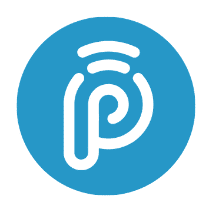Call Types: Navigating the Right Choice for Your Business
The world used to be a big place, but now it’s become virtually compact because of the ability to connect with anyone, anywhere, at any time. The digital age we live in has created an opportunistic platform for businesses that leverage this simple technology to gain more customers. For small businesses, effective call handling has become a key factor in thriving within this competitive landscape.
With the right type of call management system, including features like CRM integration and accurate call metrics, you can ensure that no customer calls are missed and that your business remains accessible around the clock. Every missed phone call could mean losing a potential customer or an opportunity to strengthen existing customer relationships. In fact, research by Salesforce shows that 88% of consumers are more likely to make another purchase after a positive customer experience.
A live answering service like PATLive is a valuable asset for handling various call types. We offer 24/7 support and help in ensuring that no incoming calls go unanswered, freeing you and your teams to focus on the core business operations and improving overall customer satisfaction.
In this article, we’ll review the different types of calls that small businesses usually handle, factors to consider when choosing the right call services, and how PATLive can help you manage all your call-handling needs efficiently.
Common Call Types
When you’re managing a call-handling system, handling different types of calls efficiently is essential for maintaining smooth operations and keeping customer satisfaction high. Regardless of the nature of your business, understanding different call types, including those integrated with interactive voice response (IVR) systems, can help you allocate resources effectively and optimize call volume.
Did you know that 75% of customers believe that it takes too long to reach a live receptionist on the phone? This highlights how long wait times and having to reiterate concerns only add to customer frustration. Moreover, abandoned calls due to excessive wait times can negatively impact your business performance.
Identifying the correct type of call and routing them to the appropriate department can significantly reduce customer frustration and improve overall customer satisfaction.
Inbound Calls
Inbound calls are one of the most crucial call types for your business, as they often involve direct interactions with potential customers and existing clients. Effectively managing these incoming calls can significantly impact customer satisfaction and overall business performance.
Let’s explore some common types of inbound calls that businesses typically handle:
1. Customer inquiries
Customer inquiries are one of the most common types of inbound calls you may receive. Having a dedicated team to handle inquiries ensures that customers receive the answers they need promptly. Providing helpful and friendly services 24/7 can enhance the customer experience, making callers feel valued and supported, which helps build strong customer relationships.
2. Sales Calls
Sales calls often come in during peak times or sometimes even outside regular business hours. By having a team in place to deal with sales inquiries and process new orders, you can maximize your conversion rates and ensure you never miss a potential sale. A quick and informed response to potential customers helps your business stand out in a competitive market.
3. Technical Support
Technical issues can frustrate customers, making it important for your business to provide quick and effective technical support. When a customer calls in with a technical issue, it’s essential to gather all relevant information, address their concerns, or escalate the issue to the right department for resolution, ensuring minimal downtime and satisfaction.
4. Call Screening and Transfers
Call screening helps manage which calls reach key personnel, filtering out unwanted calls so that time can be better focused on important matters. By creating a list of approved and rejected call types, you can prioritize high-value calls and transfer others to the appropriate departments. This improves efficiency and ensures that incoming calls are handled appropriately.
5. Message Taking
When a call cannot be answered promptly, taking a message ensures that no customer interaction is left unresolved. Rather than letting calls go to voicemail, having someone available to take detailed messages ensures important information is captured and passed along for follow-up, helping you stay responsive even when you can’t answer immediately.
6. Lead Collection and Qualification
Effectively managing lead collection and qualification is critical for business growth. In today’s competitive market, providing a personalized experience for first-time callers helps you establish trust and sets the stage for long-term customer relationships.
Ensuring that every call is handled with care and precision can significantly improve lead conversion into loyal customers. In fact, businesses that nurture their leads see 50% more sales-ready prospects at a 33% lower cost.
7. Event Registration
When you’re hosting events, it’s critical to make the registration process seamless. Event registration calls can provide information, answer questions, and confirm attendees. Ensuring that all inquiries are addressed promptly helps you boost attendance and create a smoother process for the event.
9. Emergency Dispatch
Emergency dispatch calls require a balance of efficiency and empathy. Whether it’s an HVAC issue, a lockout, or a power outage, handling these urgent situations quickly while maintaining professionalism ensures that your customers feel supported. Gathering technical information efficiently is critical in these situations to provide timely assistance.
10. Payment Processing
Managing payment processing over the phone, such as handling credit card transactions, helps streamline the financial side of your business. Ensuring payments are processed securely and efficiently is vital for maintaining and ensuring a smooth transaction experience for customers.
Transfer Calls
Routing calls to the appropriate department is essential if you have multiple departments. When a caller reaches out for assistance, it’s important to quickly and efficiently direct them to the right place and avoid customer frustration and improve overall customer satisfaction experience.
Additionally, 56% of customers say that they have to repeat or re-explain their issue to different representatives, which results in frustration. By routing calls correctly, you can ensure that each caller receives the help they need without unnecessary delays, boosting productivity and efficiency.
For example, suppose a customer in need of technical support ends up contacting the sales department. In that case, an effective automatic call distribution (ACD) system can route the call seamlessly to the right person or department.
Call Forwarding
Call forwarding is a critical function that allows you to direct calls to another phone number or a specific department. This feature is particularly useful when a team member is unavailable or when calls need to be forwarded to a different location temporarily.
For instance, if a team member is out of office or busy in a meeting, call forwarding ensures that the call is transferred to someone who can assist the customer immediately, reducing the chances of missed calls and improving customer satisfaction.
This feature also helps you maintain continuity by routing incoming calls to available staff, even if they’re not at their workstation. Whether directing calls to a mobile device, another department, or even to voicemail, call forwarding ensures that your customers always reach someone who can help.
By seamlessly integrating call forwarding into the company’s phone system, you can ensure that no call goes unanswered, leading to higher customer satisfaction and improved operational efficiency.
Factors to Consider When Choosing Call Types
When it comes to choosing the right type of call services you require for your business, several factors must be considered to ensure efficiency and productivity. Selecting the appropriate call types can enhance customer satisfaction, streamline operations, and ultimately help your business meet its objectives.
a. Business Goals and Objectives
Before deciding on the call types your business will handle, it’s essential to define your business goals and objectives. What do you want to achieve with your calls? Are you looking to increase sales through outbound calls to potential customers, or is your priority handling inbound calls for customer support? Understanding your goals will help you choose a call-handling strategy that aligns with your broader business objectives.
b. Customer Needs
Another critical factor is understanding your customer’s needs. What kind of support do your customers typically require? Do they frequently call with FAQs or for technical support, or are they more interested in placing orders or asking questions?
Tailoring your call types to fit customer expectations ensures that you’re providing the right service, whether it’s sales calls or appointment scheduling. An effective call-handling system should be designed to fulfill these needs.
c. Team Capacity
Do you have the resources to handle the incoming calls and outgoing calls your business receives? Assessing your team’s capacity is crucial. If your team struggles to keep up with call volume, it may be worth considering a reliable third-party service provider like PATLive to manage overflow, ensuring no call is missed. This way, your internal team can focus on high-priority tasks without being overwhelmed by customer calls.
d. Budget
Finally, it’s important to consider your budget for live answering services. Can you afford to hire more staff, or is outsourcing a more cost-effective option? Depending on your business size and goals, you might opt for automation or services that handle specific call types. Effective budgeting ensures that you can offer a high level of service while staying within your financial limits.
The Benefits of Using an Answering Service
Choosing to use an answering service can transform the way your business handles incoming calls, improving both efficiency and customer satisfaction. Here are some key benefits of incorporating an answering service into your business operations:
a. 24/7 Coverage
One of the most significant advantages of an answering service is ensuring that your business is always accessible to customers. With round-the-clock support, you never have to worry about missing an important phone call outside of regular business hours.
Whether it’s a late-night customer inquiry or an urgent technical support requirement, your customers can always reach a live person, which can significantly boost their experience.
b. Professional Handling
First impressions matter, and how your business handles customer calls can make or break the relationship. Answering services ensure that every caller is greeted professionally and with a friendly demeanor, no matter the time of the day. This professional touch gives confidence to your customers that their concerns will be addressed, leaving a positive impression on them.
c. Increased Productivity
By offloading routine tasks such as message taking, lead qualification, and basic customer support, a reliable answering service like PATLive frees up your internal team to focus on high-priority tasks. With fewer distractions, your team can concentrate on core business activities without the constant interruptions of incoming calls, ultimately improving overall productivity.
d. Improved Customer Satisfaction
Prompt and efficient responses to customer inquiries are key to maintaining customer satisfaction. An answering service ensures that all your calls are handled quickly and that the needs of your customers are addressed without delay, reducing frustration from long wait times or missed calls.
In fact, 83% of customers report feeling more loyal to brands that resolve their concerns efficiently. This shows that timely and effective responses can significantly impact customer retention and brand loyalty.
Boost Your Business with PATLive’s Answering Service
54% of customers in the United States report that they prefer resolving their service issues via phone calls, and thus, choosing the right answering service is essential to maintaining a positive image and enhancing customer satisfaction.

Source: Statista
Partnering with PATLive’s live call answering service ensures that your business never misses an opportunity to connect with potential customers or resolve customer inquiries efficiently. With 24/7 availability, professional handling, and seamless integration into your existing systems, we can help you manage all call types effectively, providing exceptional service at every interaction.
For customers who prefer to chat online, PATLive’s web chat platform offers businesses a seamless way to interact with their customers in real-time. Through instant messaging and personalized support, PATLive helps companies improve customer satisfaction and drive sales.
Contact us today and learn how we can transform your customer support system with our live answering services.







